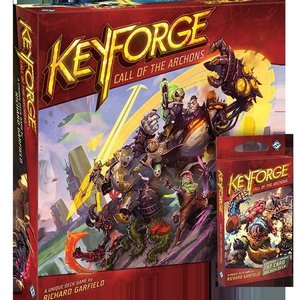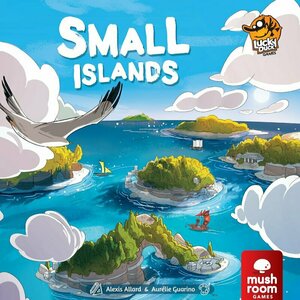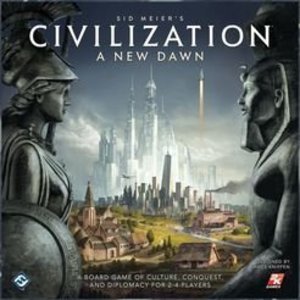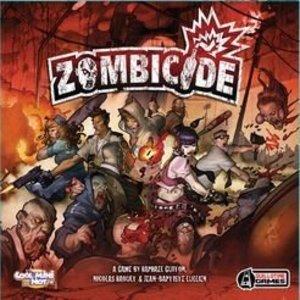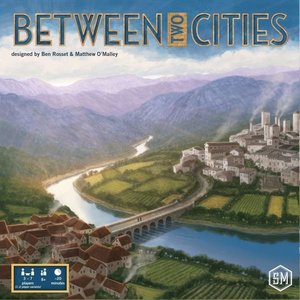
Between Two Cities
Tabletop Game
It is the early 1800s, a time of immense construction and urbanization. You are a world-renowned...
BoardGames 6playergames StonemeierGames 2015Games

Ice Age Village
Games and Entertainment
App
Discover one of the greatest successes on the App Store and embark on a delightful journey through...
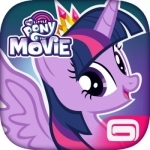
MY LITTLE PONY: MAGIC PRINCESS
Games and Entertainment
App
Saddle up for adventure with Twilight Sparkle & friends! After being locked away in the moon for...
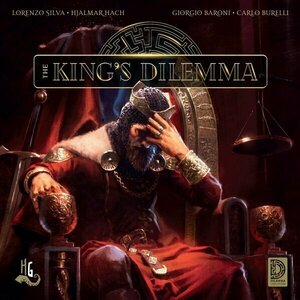
The King's Dilemma
Tabletop Game
The King's Dilemma is an interactive narrative experience with legacy elements, featuring several...
Dpaint43 (16 KP) rated Keyforge: Call of the Archons in Tabletop Games
May 31, 2019 (Updated May 31, 2019)
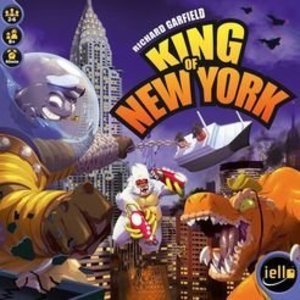
King of New York
Tabletop Game
There's always something happening in the city that never sleeps. Maybe it's the lights, maybe it's...
Purple Phoenix Games (2266 KP) rated Small Islands in Tabletop Games
Oct 13, 2021
Small Islands is a tile placement exploration game for one to four players. In it, players are explorers tasked with discovering resource-rich new islands upon which their clans may either exploit or inhabit. However, it’s each clan for themselves, and the players all need those precious resources. In the solo game, the player’s AI opponent is Alexis Allard, designer of the game. He has goal cards to be used and finishing point totals that the solo player will be attempting to beat during the course of the game.
DISCLAIMER: We were provided a copy of this game for the purposes of this review. This is a retail copy of the game, so what you see in these photos is exactly what would be received in your box. I do not intend to cover every single rule included in the rulebook, but will describe the overall game flow and major rule set so that our readers may get a sense of how the game plays. For more in depth rules, you may purchase a copy online or from your FLGS. -T
To setup, the player claims their player color and assigns Alexis with his color. They take all the components for each player and places them on the table. The starting tiles (that feature flying seagulls) are placed on the table in any orientation that is legal for play: islands need to connect, and seas need to flow from one tile to the next, as seen below. The Landscape tiles are to be shuffled and placed within reach. The four ship tiles are displayed, with all ships on their gray side, save for the solo player’s chosen color. The Navigation tile is placed below the ship tiles, and the beginning three Landscape tiles are placed in a row beside it. The small stack of Objective cards are shuffled and placed nearby, with the player drawing one to begin. They also draw two Landscape to start. For solo play, one Alexis difficulty card is chosen, and his deck of Explore and Land cards is built accordingly. The Prestige (VP) tokens are (apparently when I play) just thrown on the table and gathered in a loose pile. The game may now begin!
Small Islands is played over four rounds, with several turns being played per round. The solo player begins each round with their turn. A turn is divided into three phases: Preparation, Exploration, Reward. The Preparation phase has the player populating the Navigation Tile with six Landscape tiles face-down as a draw stack. The player then draws two Objective cards to add to their one they are currently holding. From these three cards the player will choose one to become their current objective for the round, one to be saved for a future round, and one to be discarded back to the stack. These Objective cards provide a strategy to guide the player through the current round, and also setup future rounds for scoring purposes. Upon them are icons that will award the player with points for scoring islands containing specific combinations of resources.
During the Exploration phase in the solo game, the player takes their turn first, and then Alexis will take his. A typical Exploration phase has a player deciding if they will Explore a tile or Land a ship. To Explore a tile, the player chooses one of the face-up Landscape tiles from the market/offer row and, along with their two held tiles, choose one to add to the play area. These tiles may be rotated in any fashion, as long as they can be legally placed: island edges are to be extended, sea spaces connected, et al. It is also at this time the player may place one of their Bonus Tokens upon any tile on the play area. These Bonus Tokens are resource icons that cover up existing icons on a tile, or directly over another Bonus Token. A player would do this in order to affect the balance of icons on a given island for scoring purposes.
Should the Navigation tile be empty of Landscape tiles and the player wish, they may instead Land a ship, thus ending the Exploration phase. The player chooses any of the ship tiles, and places it legally on the play area (in a sea space, as shown below). Once the player ends the phase, the game progresses to the Reward phase.
After the player takes their turn during the Exploration phase, Alexis takes his turn. This is done by drawing an Expedition card from his stack and following its instructions. The Expedition card will show whether Alexis would like to Explore or Land, which Landscape tile he would like to draw, and where he would like to place it – in relation to where the last player tile was placed.
During the Reward phase, the player will place any of their clan houseeples they wish on any island upon which they have not placed a houseeple previously. Then, consulting their Objective card, score points for successfully satisfying the card’s requirements. For Alexis, the player will draw a new Expedition card from Alexis’s stack, note the icons present on the Mission area of the card, and place Alexis houseeples upon islands that satisfy its requirements.
The game continues in this fashion until the fourth round is complete. The player totals their Prestige points (VP) and if they score more than Alexis, they win! The player must then take a picture of their archipelago they built and send it to the designer directly and gloat to them about their massive victory. Or simply rest in the satisfaction of having played the game well. Whichever.
Components. This game has a lot of components, and they are mostly cardboard and houseeples. The cardstock and board are good quality, as I have come to expect from Lucky Duck Games, and the houseeples are all different shapes for each clan color. I find that a nice and unnecessary, but very cool, touch. The art in this one is simply amazing. I mean, look at these photos! Everything from the color scheme to the art style all mesh well and give a well-considered polish to a great theme.
Okay, I won’t even hide it – I LOOOOOOVE this game. I never really liked Carcassonne very much, but Small Islands gives a similar feel, but executes everything so much better. Even with the solo rules. There are so many options available at any one time, and having a random Alexis game each time you play is just so satisfying. I feel like I could keep this game forever and not play the same game twice. Ever. And I think that I would WANT to play this one forever. Yes, I think this is a solid fit for my collection indeed, and I can see it working for so many different gamer types.
Having Alexis constantly applying the pressure to maximize and strategize every turn is delicious, and having almost zero conflict with him as we both explore is welcome. You know when you start the game how many points Alexis will score at the end of the game, so having that knowledge really makes you consider all the options available. It just works on so many levels.
If you are looking for a light-hearted, but with some great decisions to be made, then I strongly urge you to check out Small Islands. I knew immediately that this was a game for me. It’s on the lighter side without being too simple, I get to build a thing and admire it at the end of the game, and I have an opponent who just wants to see me win because he designed the game! I’m in and out in less than an hour and feel content that I was able to have a great experience with a well-designed game. I cannot wait to introduce this to all my friends and family gamers so they can fall in love with it as well.
Dillon Jacoby-Rankin (202 KP) rated Sid Meier's Civilization: A New Dawn in Tabletop Games
Jan 18, 2020
Ages: 14+
Play Time: 60-120 minutes :(
Components: The game is very nice and the board is good quality as well as the cards. The pieces are all cardboard and plastic and the colors are very nice.
Simple Turns: Easy to take turns. Easy to learn and play. Harder to strategize. You can only pick between 5 options on your turn, but depending on where they are in the line up changes everything. For example, if something is at the end of the line up, it is much more useful then being at the beginning of the line up. Everytime you use a card/action, the line up will shift down. Essentially you want to always use cards further in the line up to keep the line moving but you also need to use the right cards at the right time for your specific strategy.
Strategy: I've oh played this once but I found it hard to make a plan that would work well for me. Maybe experience would make it easier which brings me to my next topic.
Hard to get to the table: Just hearing the title makes my friends turn and run. They know the name associated with the game and that it can be a lot. Big time frame and lots of strategy. I find it hard with everyone's schedule and preferences to actually play this game. Which is why I've played it once.
Play Time: I've played a two player game and that was my only game I've played. We spent longer on the set up than actually playing. We couldn't figure out which way the board was supposed to fit together. Granted you can build it however you want really but the rules said to use that layout for the first game to make it the easiest setup. Anyways we ended the game early when other friends showed up to play something else but we could tell from where we were at and the goals we needed to achieve that it was going to be a much longer game than we had intended for the day and that was just two players.

Five Tribes
Tabletop Game
Crossing into the Land of 1001 Nights, your caravan arrives at the fabled Sultanate of Naqala. The...
Boardgames
BadgerMuffin (48 KP) rated Zombicide in Tabletop Games
Jun 3, 2019
Each character has a Specific set of Skills; Each skill allows players to do extra actions, or allows them escape options. (Wanda has Slippery, this allows her to move through spaces with Zombies).
This game has 3 Phases per Character; Move, Search, Attack.
As you kill Zombies your characters level up, gaining new skills. However you need to balance this as when one of your teammates levels up, more zombies spawn each turn.
This concept is fantastic and makes you think before you kill.
The game is high quality and printed on thick card and the minis are well detailed. The box it is provided in is also high quality, however I would suggest getting something to store the mini's as the plastic packaging they come in is rather weak.
Gameplay is simple to pickup, however this should really be player Sobre as gameplay does require some thought.
TL;DR
-Good Fun
-Easy to Pickup
-Requires Thought
-Worth Getting Expansions
